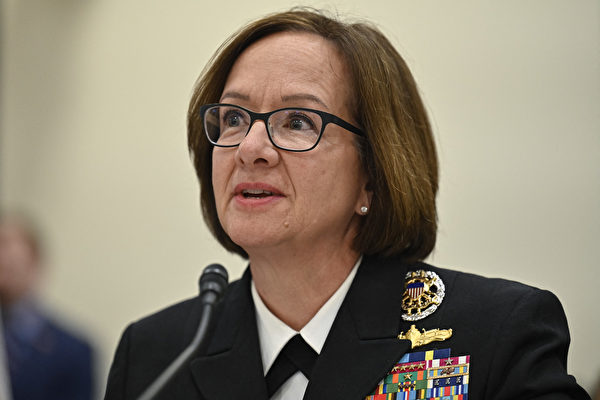To counter the threat posed by the Chinese Communist Party (CCP) to Taiwan, the US military is actively enhancing its combat capabilities. Drawing on the past year’s combat experience in the Red Sea and Black Sea, the US Navy is expanding its operational skills and training scope while working to overcome recruitment challenges.
On Wednesday, September 18, US Navy Chief of Naval Operations Admiral Lisa Franchetti released the latest “US Navy Operations Plan” (NAVPLAN) at the Naval War College. The new operations plan aims to achieve two strategic objectives: preparing for a potential US-China war by 2027 and strengthening the Navy’s long-term advantage.
The US has repeatedly warned that the People’s Liberation Army (PLA) is following CCP leader Xi Jinping’s directive to launch a war against Taiwan before 2027.
Franchetti stated, “The ‘US Navy Operations Plan’ is an overarching strategic guidance that I developed to enhance the Navy’s readiness, prioritizing readiness against potential conflicts with China (CCP) before 2027 and reinforcing the Navy’s long-term operational advantage.”
In a statement on Wednesday, the US Navy indicated that it will achieve these goals through two main avenues: implementing the seven objectives of “Project 33” and expanding the Navy’s contributions to joint operational ecosystems.
The seven priority objectives include eliminating maintenance delays for ships, submarines, and aircraft; expanding and enhancing the application of robots and autonomous systems for rapid platform integration; establishing command centers necessary for fleet victory on distributed battlefields; recruiting and retaining more personnel; providing service quality commensurate with Navy contributions; conducting real-world and virtual training in a planned manner; and restoring critical onshore infrastructure to support and advance ground operations.
The statement highlighted that the threat from the CCP extends beyond its military vessels to include multi-domain operations, gray zones, and economic activities, such as the growing nuclear arsenal, expanding dual-use airport facilities, and dual-use forces like maritime militia.
Franchetti mentioned in an interview with the Associated Press that a major challenge is ensuring that 80% of the forces are fully prepared at any given time to engage in combat when needed, acknowledging that this is a “high-level goal.”
She emphasized the importance of reaching a certain level of combat readiness, where “if the nation calls upon us, we can hit the ‘start’ button, rapidly assemble forces, and meet the call.”
While announcing these objectives, US leaders are also working to balance delicate international relations by pledging to defend Taiwan on one hand and striving to maintain communication with the CCP authorities on the other to prevent larger conflicts.
Furthermore, the US Navy is drawing experience from the past year’s battles in the Red Sea and Ukraine’s defense against Russia in the Black Sea to assist military leaders in preparing for a potential US-China confrontation.
In any conflict in the Asia-Pacific region, controlling the seas will be a critical factor. Franchetti referred to the US ability to learn from Ukraine’s use of drones, airstrikes, and remote unmanned surface vessels in the Western Black Sea, effectively restricting the activities of Russian ships and maintaining access to critical ports.
The US Navy’s prolonged engagement with Iran-backed Houthi rebels in Yemen has also provided valuable lessons and experience.
Franchetti noted, “I think the Navy has learned the most it can because this is our first prolonged exposure to a weapons engagement zone.”

